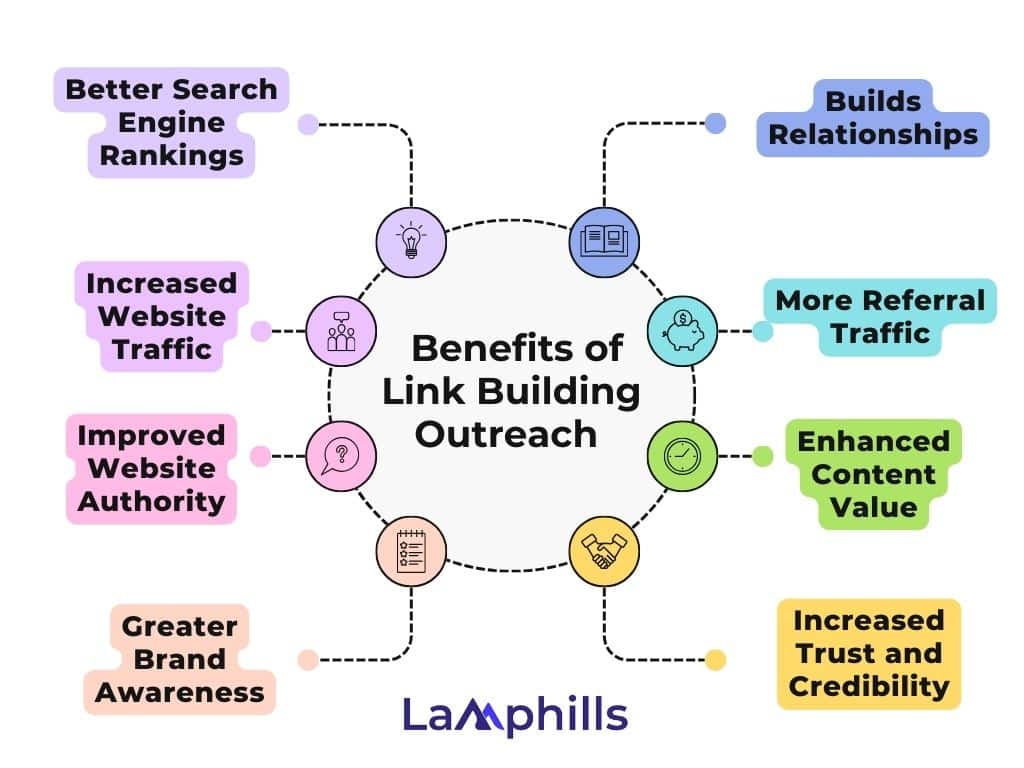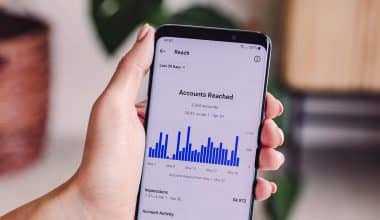I remember the first time I tried link-building outreach. It felt like jumping into deep water without knowing how to swim. I had just started managing a blog for a friend, who happens to be my first client, and despite putting in a lot of effort, it wasn’t getting the attention I wanted.
Then, a more experienced blogger told me about the benefits of link-building. I decided to give it a try. I started researching and reading to learn more about link-building outreach, and eventually, I was convinced it was worth trying.
You probably know that link building is important for SEO. But how do you get other sites to link to your great content? The answer is link-building outreach. Link-building outreach means reaching out to the right people with the right message at the right time.
In this guide, you’ll learn exactly how to do that.
Key Takeaways
- Link Building Outreach means reaching out to other websites or influencers and asking them to link back to your website. Backlinks are important because they tell search engines that your site is trustworthy and valuable, which helps improve your site’s ranking in search results.
- When other websites link to yours, search engines like Google think your site is important and trustworthy. This can help your site show up higher in search results, making it easier for people to find you.
- By sharing your knowledge on other sites, you reach a new audience. This helps you build credibility and trust.
- To make your outreach emails stand out and get positive responses, Create High-Quality Content: Make sure your content is valuable, interesting, and useful. High-quality content is more likely to get linked to. Explain what’s in it for them. Whether it’s a useful resource, a guest post, or a mutual backlink, make sure you offer something valuable.
- One of the tools to help in link-building outreach is Ahrefs. It is a comprehensive SEO tool that has powerful features for link-building and outreach. It provides in-depth data on backlinks, keywords, and competitor analysis.
What Is Link Building Outreach?
Link Building Outreach means reaching out to other websites or influencers and asking them to link back to your website. Backlinks are important because they tell search engines that your site is trustworthy and valuable, which helps improve your site’s ranking in search results.
The goal is to make your site more visible and credible, which can help it rank better on search engines. But getting links isn’t easy. You can’t just send random requests. You need to offer something valuable in return.
That’s where link-building outreach comes in.
Link-building outreach involves finding the right websites, writing personalized and convincing messages, and building relationships with other webmasters. The aim is to show them that your content is worth linking to and that linking to it will benefit them and their audience.
Read Also: Backlink Outreach: Meaning, Types & How to Build a Successful One
One day, while learning how to get more people to visit my blog, I discovered the amazing benefits of reaching out to other websites for links. Curious, I decided to give it a try. My first outreach email was awkward, and I got very few responses. But I didn’t give up. Over time, I learned the ins and outs of outreach link building. Today, my friend’s blog as well as other clients’ domain authority is much higher, thanks to effective link-building strategies.
Benefits of Link Building Outreach
Link-building outreach is a powerful strategy that involves contacting other websites to get them to link back to your site. This practice not only boosts your website’s visibility but also brings several other significant advantages. Here are the key benefits:

#1. Better Search Engine Rankings
When other websites link to yours, search engines like Google think your site is important and trustworthy. This can help your site show up higher in search results, making it easier for people to find you.
#2. Increased Website Traffic
When you get links from other websites, more people can find your site. Visitors on those websites might click on the link to your site, bringing new visitors and potential customers.
#3. Improved Website Authority
Getting links from popular and respected websites makes your site look more credible and reliable. This means people and search engines see you as an expert in your field, which can improve your reputation.
#4. Greater Brand Awareness
When your site is linked from various places, more people learn about your brand. This helps spread the word about your products or services, increasing the chances of people recognizing and choosing your brand.
#5. Builds Relationships
Reaching out to other website owners helps you make connections and build relationships. These connections can lead to more opportunities for collaboration, like guest blogging or joint promotions.
#6. More Referral Traffic
Links on other sites can bring visitors directly to your site, not just from search engines. This means you get traffic from different sources, increasing the number of people who visit your site.
#7. Enhanced Content Value
Knowing that other sites might link to your content encourages you to create high-quality and useful content. This improves the overall value of your site’s content, making it more helpful and attractive to visitors.
#8. Competitive Advantage
If your competitors are not doing much link-building outreach, you can gain an edge over them. More links can mean more visibility and success compared to your competitors, helping you stand out in your industry.
#9. Increased Trust and Credibility
Being linked by reputable sites makes visitors trust your site more. This increased trust can lead to more conversions, meaning more visitors become paying customers or loyal followers.
#10. Opens Up New Opportunities
As you build relationships through outreach, you might discover new opportunities like guest blogging, partnerships, or joint ventures. These opportunities can further grow your audience and business.
These benefits show that link-building outreach is a powerful tool for improving your website’s visibility, traffic, and credibility. By reaching out to other websites and building relationships, you can gain a competitive edge, increase trust, and open up new growth opportunities. Investing time in link-building outreach can have a big impact on the success of your site.
Now, let’s see some link-building strategies you can use to improve your search engine optimization.
Link-Building Outreach Tactics to Improve Your SEO
Link-building outreach is a great way to improve your website’s visibility and authority. By reaching out to other websites and getting them to link to your content, you can attract more visitors and build a stronger online presence.
Here are some simple tactics to help you get started with link-building outreach:
#1. Guest Posting
This can also be called Guest Blogging. It simply means writing and publishing an article on someone else’s website to get a link back to your site. It’s a popular way to improve your website’s search engine ranking. By sharing your knowledge on other sites, you reach a new audience.
This helps you build credibility and trust. The link in your guest post drives traffic to your website. It also signals to search engines that your site is valuable. Overall, guest posting is a win-win for visibility and SEO.
#2. Broken Link Building
This is a technique used in link-building outreach where you find broken links on other websites. These are links that no longer work or lead to missing pages. You then create similar content to what the broken link used to point to. Next, you contact the website owner and suggest they replace the broken link with a link to your new content. This helps the website fix its broken links and gives you a valuable backlink. It’s a win-win situation for both parties. By fixing broken links, you improve your site’s visibility and authority.
Find links on other websites that no longer work. Contact the site owner and suggest they replace the broken link with a link to your similar content. Tools like Ahrefs’ Site Explorer can help you identify broken links quickly and easily.
#3. Social media

The essence of Social Media in link building cannot be over-emphasized. Social media is a powerful tool for link-building outreach because it helps you connect with a large audience. By sharing your content on platforms like Facebook, Twitter, and LinkedIn, you can attract the attention of influencers and bloggers. These people can share your content with their followers, which can lead to more backlinks to your website.
Engaging with your audience through comments and messages can build relationships and increase the chances of your content being shared. Using hashtags and joining relevant groups can help you reach a targeted audience interested in your niche.
Additionally, regularly posting valuable content can establish your authority and trustworthiness. In summary, social media makes it easier to promote your content and gain more backlinks.
#4. Blogger Outreach
This is a tactic in link building where you connect with bloggers to get them to link to your website. It involves finding bloggers who write about topics related to your business. You then reach out to them, often through email, to build a relationship. You might offer them valuable content, like a guest post, that they can publish on their blog.
When they include a link to your site in this content, it helps improve your website’s ranking in search engines. This is because search engines see these links as a sign that your site is trustworthy. Overall, blogger outreach helps increase your site’s visibility and authority online.
#5. Skyscraper Technique
The Skyscraper Technique is a link-building strategy that involves finding high-quality content in your niche that already has a lot of backlinks. First, you identify popular articles or blog posts. Then, you create your version, but a better version, by adding more details, updating information, or making it more visually appealing. Once your improved content is ready, you reach out to websites that link to the original content, suggesting they link to your superior version instead.
This way, you build high-quality backlinks more effectively. It’s like creating a taller skyscraper that stands out, attracting more attention and links. The goal is to provide more value than existing content, encouraging others to link to yours.
#6. Resource Page Outreach
Resource Page Outreach is a strategy used in link building to get backlinks from websites. The idea is to find web pages that list helpful resources in your niche. You then contact the site owner and suggest they add your content to their resource list.
This works well because these pages are already designed to link to useful content. It helps your site gain more authority and traffic. It’s important to personalize your request and explain why your content is valuable. This tactic builds relationships and boosts your site’s visibility in search engines.
#6. Influencer Outreach
In an Influencer outreach strategy, you connect with popular online personalities to build links for your website. These influencers have a large and engaged audience that trusts their opinions. By collaborating with them, you can get your website mentioned or linked to their content.
This helps increase your website’s visibility and credibility. The process involves identifying relevant influencers, reaching out to them with a personalized message, and proposing a mutually beneficial partnership. Successful influencer outreach can lead to more traffic and higher search engine rankings for your site. It’s a key tactic in modern digital marketing and link-building efforts.
#7. Content Promotion

Image by azerbaijan_stockers on Freepik
Content promotion is a strategy used in link-building outreach to get your content noticed by a larger audience. First, you create high-quality content that is valuable and interesting. Next, you reach out to bloggers, influencers, and websites that might be interested in your content. You share your content with them, hoping they will link to it or share it with their followers.
This increases the visibility of your content and attracts more traffic to your website. Additionally, having more links from reputable sites improves your site’s search engine ranking. It’s like telling lots of people about a great book so that they read it and tell others. The goal is to spread your content far and wide, gaining more exposure and credibility.
#8. Unlinked Mentions
These are when a website mentions your brand or content without linking to your site. This tactic involves finding these mentions and asking the site owner to add a link. It’s a friendly way to get backlinks since they already like your content.
You can use tools to find these mentions online. Once you identify them, reach out to the website politely. Explain the benefits of adding a link for their readers. This helps improve your site’s SEO and drives more traffic.
#9. Testimonials and Reviews
Testimonials and reviews are powerful tools in link-building outreach. When you provide a testimonial for a company, they often display it on their website, including a link back to your site. This helps build credibility for both parties. Reviews work similarly; when you review a product or service, the company might share your review with a link to your site.
This increases your visibility and can drive traffic to your website. It also helps create strong, trust-based relationships with other businesses. Overall, using testimonials and reviews can be an effective and easy way to improve your site’s SEO through quality backlinks.
#10. Link Reclamation
This is a tactic in link building where you find and fix broken or lost links to your website. First, you look for instances where your website was mentioned but not linked. Then, you reach out to the website owners and ask them to add the link.
This can also include fixing broken links that once worked but no longer do. It’s a way to regain lost traffic and improve your website’s SEO. The process helps ensure your content gets the recognition it deserves. Ultimately, it strengthens your website’s online presence.
Find links to your site that are broken or outdated. Contact the website owner and ask them to fix or update the link.
#11. Collaborations and Partnerships
In link-building outreach, collaborations and partnerships involve working with other websites or influencers to create and share content. This tactic helps both parties by exchanging links, which boosts their search engine rankings. By partnering, you can reach a wider audience and gain credibility. It’s like teaming up with friends to spread the word about your projects.
These collaborations often involve guest blogging, joint events, or co-created content. The key is to find partners with similar interests and values. This mutual support can lead to long-term relationships and more visibility online.
#12 Visual Content Outreach
Visual content outreach is a strategy used in link building to create and share engaging images, videos, or infographics. The goal is to attract attention and encourage other websites to link back to your content. By providing visually appealing and informative content, you increase the chances of getting your content shared widely. This can lead to more traffic to your website and improve its search engine rankings.
It’s important to create high-quality and relevant visuals that resonate with your target audience. Sharing this content on social media and other platforms can boost its visibility. Overall, visual content outreach makes your link-building efforts more effective and engaging.
#13. Competitor Analysis
In link-building outreach, competitor analysis is about studying your competitors to see where they get their backlinks. By examining their backlink profiles, you can find websites that might link to you as well. This helps you identify potential link opportunities that you may have missed. It’s like checking out where your rivals are getting their support and then reaching out to those same sources.
Doing this can give you a better chance to improve your website’s search engine ranking. You can also learn what types of content attract more links. Overall, it’s a smart way to boost your own link-building efforts by learning from others in your industry.
Read Also: Spam Backlinks: The Silent Saboteurs of Your Website’s Credibility
Using these simple link-building outreach tactics can greatly improve your website’s visibility and credibility. By building strong relationships and creating valuable content, you can attract more visitors and achieve better search engine rankings.
Tips for Effective Link-Building Outreach
These tips will help make sure your outreach emails stand out. With these tips, you won’t just send the perfect email, you’ll also get positive responses:
1. Research Relevant Sites: Find websites that are related to your content and have good authority. These are the sites you want links from.
2. Create High-Quality Content: Make sure your content is valuable, interesting, and useful. High-quality content is more likely to get linked to. Explain what’s in it for them. Whether it’s a useful resource, a guest post, or a mutual backlink, make sure you offer something valuable.
3. Personalize Your Messages: When reaching out, use the recipient’s name and mention specific details about their site. Personalized messages are more likely to get a positive response.
4. Be Clear and Concise: Respect the recipient’s time. A concise, well-written email is more likely to get a response. Keep your messages short and to the point. Clearly explain why linking to your content would benefit them and their audience.
5. Offer Something of Value: Give a good reason for them to link to your site. This could be a piece of valuable content, a resource, or a mutual benefit.
6. Follow Up Politely: If you don’t get a response, send a polite follow-up message after a week or so. People are busy, and a reminder can help. Sometimes, your initial email might get overlooked.
7. Build Relationships: Focus on building long-term relationships rather than just getting a link. Engage with the website owners on social media, comment on their blog posts, and stay connected.
To make the link-building outreach process easier, several tools can help you find contact information, manage communications, and track your outreach efforts, this article provides a list of the best six tools below.
Tools to Help with Link Building Outreach
I have carefully selected six top tools to help with link-building outreach: BuzzStream, Hunter.io, Pitchbox, NinjaOutreach, Ahrefs, and SEMrush.
Let’s explain further what each tool offers, including their features, benefits, and drawbacks
#1. BuzzStream
BuzzStream is a powerful outreach tool designed to help with link building by simplifying the process of finding contact information, managing communications, and keeping track of your outreach campaigns.
Features and Functionalities
- Contact Management: Easily find and store contact information for your prospects.
- Outreach Automation: Send personalized emails and follow-ups automatically.
- Relationship Tracking: Track your conversations and relationships with influencers and websites.
- Campaign Tracking: Monitor the performance of your outreach campaigns in real-time.
- Email Templates: Create and use templates to save time on repetitive tasks.
Pros
- Streamlines the outreach process.
- Centralizes contact and communication management.
- Offers detailed analytics and tracking.
Cons
- Can be expensive for small businesses.
- Learning curve for new users.
#2. Hunter.io
Hunter.io is a tool that helps you find and verify email addresses associated with specific domains. It is particularly useful for finding the contact information of site owners and bloggers.
Features and Functionalities
- Email Finder: Locate email addresses based on the domain or company.
- Email Verification: Verify the validity of email addresses to reduce bounce rates.
- Bulk Email Search: Find multiple email addresses at once with bulk search.
- Chrome Extension: Access Hunter.io features directly from your browser.
Pros
- Simple and easy-to-use interface.
- High accuracy in finding and verifying emails.
- Useful Chrome extension.
Cons
- Limited features in the free version.
- Credits can run out quickly with heavy use.
#3. Pitchbox
Pitchbox is a comprehensive link-building and influencer outreach platform that helps you discover, engage, and track prospects efficiently.
Features and Functionalities
- Prospect Discovery: Find influencers and websites relevant to your niche.
- Email Personalization: Send personalized emails at scale.
- Automated Follow-Ups: Schedule and automate follow-up emails.
- Campaign Management: Manage multiple outreach campaigns from a single dashboard.
- Analytics and Reporting: Detailed reports on outreach performance.
Pros
- Extensive automation features.
- Robust prospecting tools.
- Comprehensive reporting and analytics.
Cons
- Can be expensive for small businesses.
- Complex setup process.
#4. NinjaOutreach
NinjaOutreach is a versatile tool for influencer marketing and link building, designed to help you find influencers, manage relationships, and track outreach efforts.
Features and Functionalities
- Influencer Search: Search for influencers and bloggers in your niche.
- Outreach Management: Send and manage outreach emails from within the platform.
- CRM Functionality: Track relationships and interactions with prospects.
- Email Templates: Use pre-built templates for faster outreach.
- Performance Tracking: Monitor the success of your outreach campaigns.
Pros
- User-friendly interface.
- Integrated CRM functionalities.
- Effective influencer search and management.
Cons
- Limited reporting capabilities.
- Can be pricey for smaller teams.
#5. Ahrefs
Ahrefs is a comprehensive SEO tool that includes powerful features for link-building and outreach. It provides in-depth data on backlinks, keywords, and competitor analysis.
Features and Functionalities
Backlink Analysis: Detailed insights into your backlinks and those of competitors.
Content Explorer: Find popular content and potential link opportunities.
Site Explorer: Comprehensive analysis of any website’s SEO metrics.
Keyword Explorer: In-depth keyword research and analysis.
Alerts: Get notifications about new and lost backlinks.
Pros
- Extensive database and detailed analytics.
- Useful for both link building and overall SEO.
- Regular updates and improvements.
Cons
- High cost for full access.
- Steep learning curve for beginners.
#6. SEMrush
SEMrush is an all-in-one marketing toolkit that includes features for SEO, content marketing, and link building. It helps you discover link opportunities, track backlinks, and analyze competitors.
Features and Functionalities
Backlink Analytics: Comprehensive analysis of your backlinks and competitors.
Link Building Tool: Identify and manage link-building opportunities.
Domain Analysis: Get detailed metrics on any domain.
Outreach Management: Manage your outreach campaigns directly from the platform.
Competitor Analysis: In-depth analysis of your competitors’ link profiles.
Pros
- Wide range of features beyond link building.
- Intuitive interface and easy to use.
- Valuable insights and data.
Cons
- Expensive for small businesses.
- Some features can be overwhelming for new users.
These tools can significantly enhance your link-building outreach efforts. They offer various features to help you find contact information, manage communications, and track your progress. While each tool has its pros and cons, choosing the right one depends on your specific needs and budget.
By leveraging these tools, you can streamline your outreach process, build valuable links, and improve your website’s SEO performance.
Example and Template of Successful Link-Building Outreach Emails
Example: Content Collaboration
Subject: Collaboration Opportunity: [Your Article Title]
Email:
Hi [Recipient’s Name],
I hope this email finds you well.
I recently came across your article on [Topic or Title of their article] and was thoroughly impressed by the depth and quality of your content. You have a great deal of expertise in [Subject Area].
I wanted to reach out because I’ve just published a comprehensive guide on [Your Article Topic] that I believe would be a valuable resource for your readers. You can check it out here: [Link to Your Article].
If you find it useful, I would be thrilled if you could mention it in your article on [Relevant Topic on Their Site]. I’m confident it would provide your readers with additional insights and value.
Thank you for considering my request. I look forward to hearing from you soon.
Best regards,
[Your Name]
[Your Position]
[Your Website]
[Contact Information]
Template: Content Collaboration
Templates can save time and ensure consistency in your outreach efforts. Here’s a simple template to get you started:
Subject: Collaboration Opportunity: [Your Article Title]
Email:
Hi [Recipient’s Name],
I hope this email finds you well.
I recently came across your article on [Topic or Title of their article] and was thoroughly impressed by the depth and quality of your content. You have a great deal of expertise in [Subject Area].
I wanted to reach out because I’ve just published a comprehensive guide on [Your Article Topic] that I believe would be a valuable resource for your readers. You can check it out here: [Link to Your Article].
If you find it useful, I would be thrilled if you could mention it in your article on [Relevant Topic on Their Site]. I’m confident it would provide your readers with additional insights and value.
Thank you for considering my request. I look forward to hearing from you soon.
Best regards,
[Your Name]
[Your Position]
[Your Website]
[Contact Information]
Conclusion
Link Building Outreach is not an instant success; it can be complicated, takes a lot of time, and sometimes costs a lot. So, it requires patience, persistence, and continuous learning because it’s very important for improving your website’s strength and visibility in search engine results.
By sharing my experiences and insights, I hope to make the process of outreach link-building easier for you. Remember, every successful backlink starts with a well-crafted, genuine outreach email. Happy link-building!
Bonus Answers to FAQs.
How do I track links in outreach?
Users can see if a Prospect has clicked a link by checking the Outreach Outbox and looking at the Click-Tracking icon (link). The color of the icon shows if the Prospect is engaged. If the icon is blue, the Prospect has clicked the link.
What is the purpose of link building?
Link building is a way to improve your search engine ranking. It helps search engines decide how important your page is. When a website has many links pointing to it, it shows that the content is valuable.
What are the factors in link building?
Top Factors for Building Links
1. Number of links from main websites: This refers to how many links come from different main websites.
2. Age of linking websites: Older websites linking to you are more valuable.
3. Links from different IP addresses: Links from various IP addresses are better.
4. Anchor text: The clickable text in a hyperlink is important.
5. Backlinks from country-specific websites: Links from websites in different countries help.
6. Domain Authority (DA) and Page Authority (PA): High DA and PA of linking sites are beneficial.
7. Paid links: Links you pay for can have an impact.
8. Link diversity: A variety of links from different sources is good.
How to do outreach for backlinks?
Steps to Build Strong Backlink Connections
1. Choose Who to Contact: Before reaching out, remember there’s a real person on the other end.
2. Interact With Their Content: Engage with what they share.
3. Make It Personal: Personalize your messages.
4. Stay Connected: Keep in regular contact.
5. Partner Up: Work with a backlink outreach partner.
Related Articles:
Backlink Outreach: Meaning, Types & How to Build a Successful One
SEO Outreach Explained: A Beginner’s Guide to Getting Quality Backlinks
What Is Link Farming and Why Is It Considered a Black Hat SEO Tactic?






